Engineered wood, a remarkable material known for its versatility and durability, has revolutionized various industries, particularly furniture manufacturing. Today, most furniture and home decor manufacturers use it in some way.
Read on as we explore engineered wood’s various types, benefits, and applications beyond furniture. We will also highlight how Mondoro can assist you in creating, developing, and manufacturing high-quality home decor and furniture products using engineered wood.
Table of Contents
- What is Engineered Wood?
- Types of Engineered Wood
- Beyond Furniture: Other Uses of Engineered Wood
- Choosing the Best Engineered Wood for Furniture Production
- How Mondoro Can Help You
- Related Content
What is Engineered Wood?
Engineered wood, also referred to as composite wood or manufactured board, is a product made by binding together wood particles, fibers, or veneers with adhesives to form a composite material.
This process results in a product that mimics the appearance and properties of natural wood but with enhanced performance characteristics.
Benefits of Engineered Wood
There are many great benefits to engineered wood, which include the following:
Dimensional Stability:
Engineered wood is less prone to warping, shrinking, or expanding than solid wood, making it an excellent choice for various applications.
Cost-Effective:
Generally more affordable than solid wood, engineered wood offers a budget-friendly alternative without compromising quality.
Environmental Sustainability:
Using wood by-products and recycled materials makes engineered wood an eco-friendly option.
Versatility:
Available in various forms and finishes, engineered wood can be tailored to various applications and design preferences.
Types of Engineered Wood
There are several types of engineered wood, each with unique properties suited to different applications. Here, we explore some of the most common types:
1. Plywood
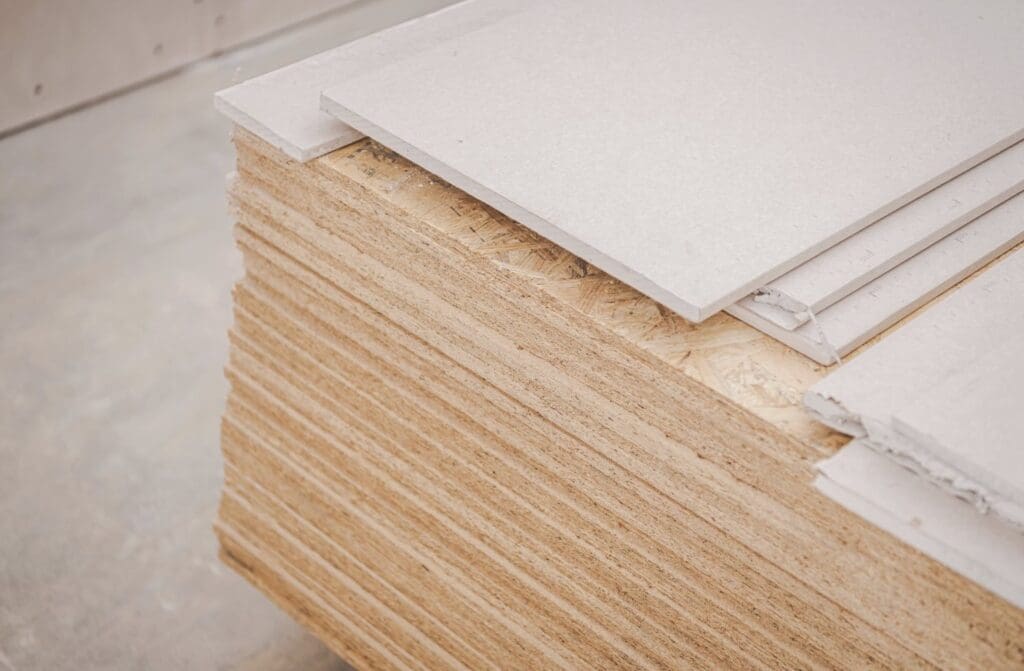
Description: Plywood is made by gluing together thin layers of wood veneer with each layer’s grain oriented at right angles to the adjacent layers. This cross-graining technique enhances the material’s strength and stability.
Applications:
- Furniture: Plywood makes robust furniture like cabinets, tables, and shelves.
- Construction: Due to its strength, it is commonly used in structural applications such as flooring and roofing.
2. Medium-Density Fiberboard (MDF)
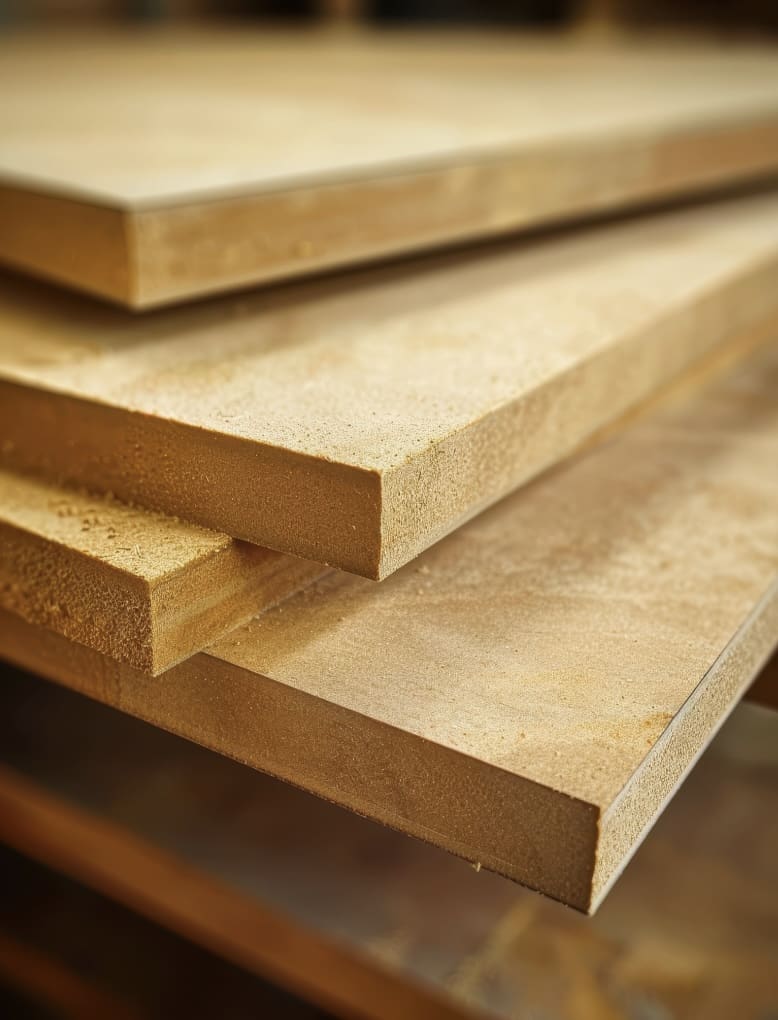
Description: MDF is produced by breaking down hardwood or softwood residuals into wood fibers, combined with wax and resin binders, and formed into panels by applying high temperature and pressure.
Applications:
- Furniture: Ideal for furniture requiring a smooth finish, such as bookcases, wardrobes, and decorative moldings.
- Interior Design: Commonly used for interior paneling and architectural detailing.
3. Particleboard
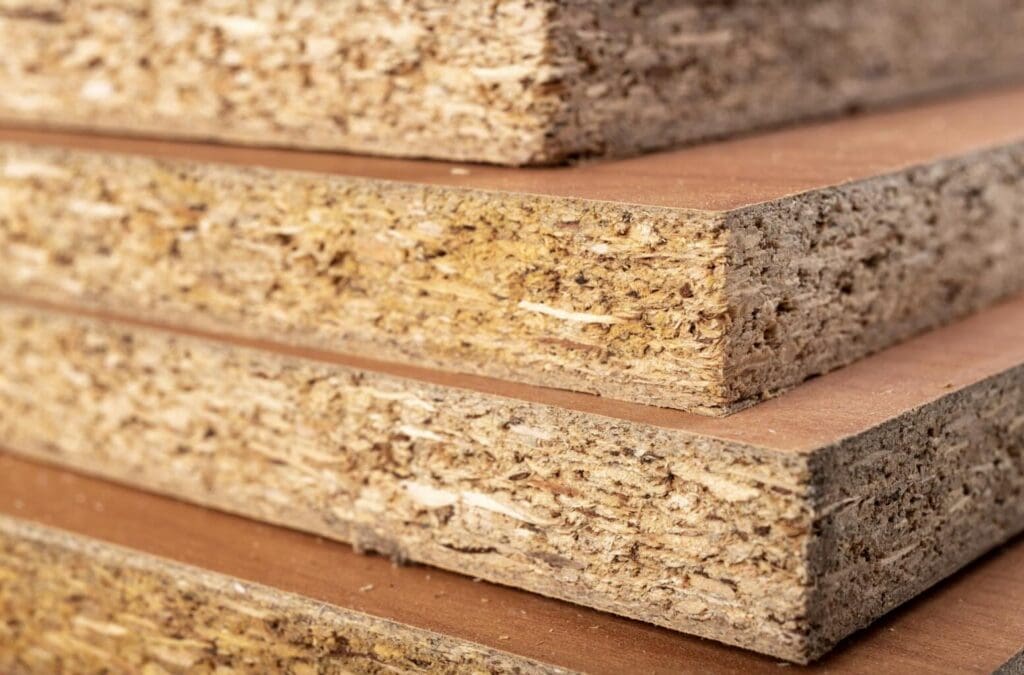
Description: Particleboard is created by bonding wood chips, sawmill shavings, or sawdust with a synthetic resin or binder and pressing them into sheets.
Applications:
- Furniture: Frequently used in affordable, ready-to-assemble furniture.
- Flooring: Often used as a subflooring material due to its low cost and availability.
4. Oriented Strand Board (OSB)

Description: OSB is made from large wood strands oriented in layers that bond together with adhesives. This composition gives OSB a high strength-to-weight ratio.
Applications:
- Construction: Widely used for sheathing in walls, floors, and roofs.
- Furniture: Utilized in the creation of industrial-style furniture and shelving units.
5. Laminated Veneer Lumber (LVL)
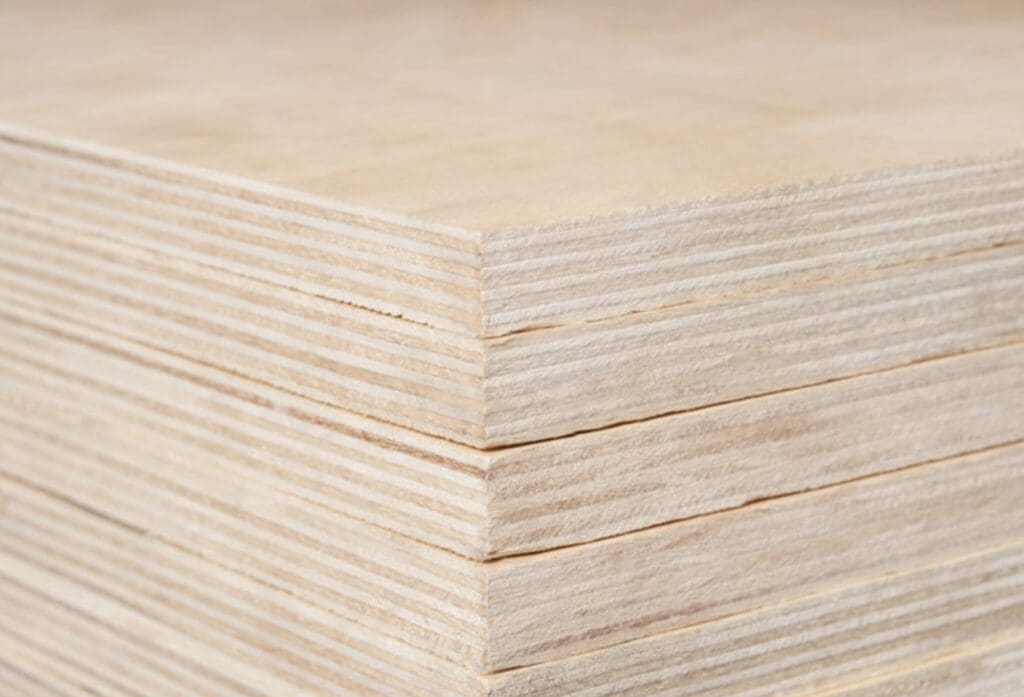
Description: LVL is produced by layering thin sheets of wood veneer and bonding them with resins. It offers high strength and stability, making it suitable for structural applications.
Applications:
- Structural Components: Used in beams and supports for buildings.
- Furniture: Suitable for heavy-duty furniture such as bed frames and tables.
Beyond Furniture: Other Uses of Engineered Wood
While engineered wood is prevalent in furniture production, its applications extend far beyond that. Here are some other significant uses:
1. Construction and Building
Engineered wood products like plywood, OSB, and LVL are crucial in construction due to their strength, durability, and cost-effectiveness. They are used in framing, flooring, roofing, and structural components, providing a reliable and sustainable alternative to solid wood.
2. Packaging
Engineered wood, particularly particleboard, is used to manufacture pallets, crates, and other packaging materials. Its affordability and structural integrity make it ideal for transporting goods safely.
3. Interior Design and Decor
Engineered wood products such as MDF are popular in interior design for creating decorative elements like wall panels, moldings, and cabinetry. Their smooth surface and ease of finishing allow for intricate designs and high-quality finishes.
4. DIY Projects
For DIY enthusiasts, engineered wood provides an accessible and versatile material. Plywood and MDF are commonly used in home improvement projects, including shelving, custom furniture, and decorative pieces.
5. Musical Instruments
Engineered wood, especially plywood, is used to construct musical instruments. Its consistent quality and dimensional stability make it suitable for parts that require precision and durability.
Choosing the Best Engineered Wood for Furniture Production
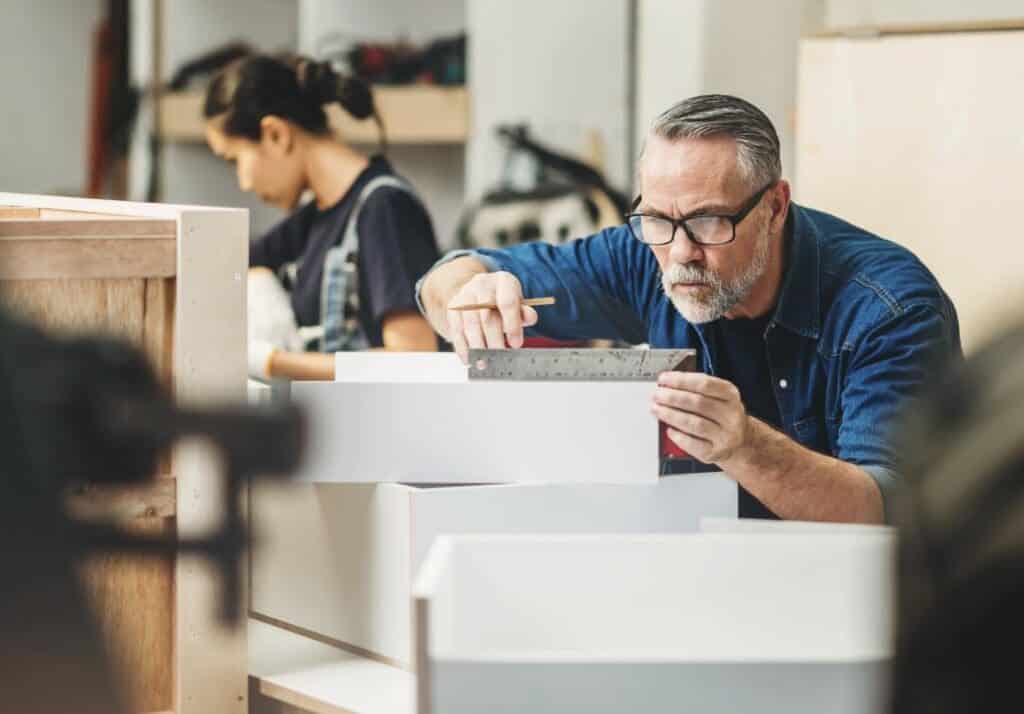
When selecting engineered wood for furniture production, several factors need to be considered, including strength, durability, cost, and the intended use of the furniture. Here are some guidelines:
Strength and Durability
Due to their high strength and stability, plywood and LVL are excellent choices for furniture that needs to withstand heavy use or bear significant weight, such as tables and shelving.
Smooth Finish
For pieces that require a smooth surface for painting or veneering, MDF is ideal. Its uniform texture and easy machinability make it perfect for detailed decorative work and cabinetry.
Cost-Effectiveness
Particleboard is a suitable option for budget-friendly furniture. It provides an economical solution for non-load-bearing furniture like desks and flat-pack items.
Environmental Impact
Considering the environmental impact, choosing engineered wood products from recycled or sustainably sourced materials can contribute to eco-friendly furniture production.
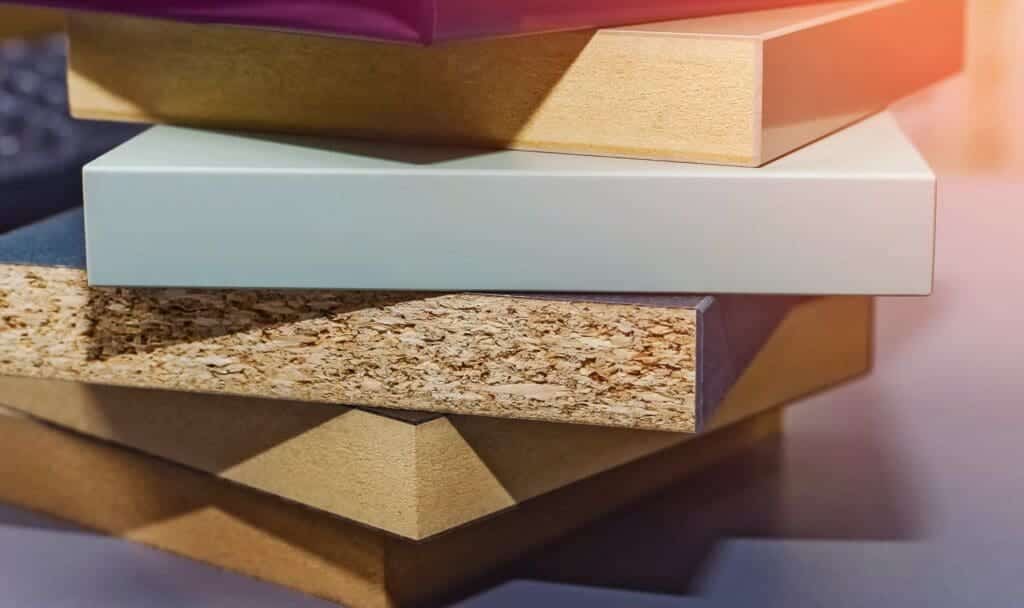
How Mondoro Can Help You
At Mondoro, we specialize in creating, developing, and manufacturing high-quality home decor and furniture using various materials, including engineered wood. Our commitment to excellence and sustainability ensures we deliver products that meet your needs and preferences.
Creative Partner
At Mondoro, we can be your creative partner, helping you create unique, innovative furniture pieces tailored to your aesthetic and functional requirements. Our experienced designers work closely with you to bring your vision to life.
Quality Manufacturing
Our state-of-the-art manufacturing facilities and skilled craftsmen ensure that every piece of furniture is made to the highest standards. We use advanced techniques and quality materials to produce durable and beautiful products.
Material Expertise
With our extensive knowledge of materials, we can help you choose the best-engineered wood for your projects. Whether you need the strength of plywood, the smooth finish of MDF, or the affordability of particleboard, we provide expert guidance to ensure optimal results.
Sustainability Commitment
We are dedicated to sustainable practices, using eco-friendly materials and processes to minimize our environmental footprint. By choosing Mondoro, you contribute to a greener future while enjoying high-quality, sustainable furniture.
Comprehensive Solutions
We offer comprehensive solutions to all furniture and decor needs from concept to completion. Our services include design, prototyping, manufacturing, and quality assurance, ensuring a seamless and satisfying experience.
Customer Focus
At Mondoro, we prioritize your needs and preferences. We work closely with you to understand your requirements and deliver products that suit your space and lifestyle perfectly. Your satisfaction is our top priority.
Engineered wood is a versatile and reliable material that has become integral to furniture production and numerous other applications. Its unique properties, such as dimensional stability, cost-effectiveness, and environmental sustainability, make it an excellent choice for various uses. By understanding the different types of engineered wood and their best applications, you can make informed decisions for your projects.
Mondoro is here to assist you in creating, developing, and manufacturing high-quality home decor and furniture products using the best-engineered wood materials. Our expertise, commitment to quality, and sustainable practices ensure we deliver exceptional results tailored to your needs—partner with Mondoro to bring your vision to life with beautiful, durable, and eco-friendly furniture.
At Mondoro, we would love to help you decide which material would be best for manufacturing your home decor and furniture product.
Find out more about how Mondoro can help you create, develop, and manufacture excellent home decor and home furniture products – including lacquer furniture. Don’t hesitate to contact me, Anita. Check out my email by clicking here or become a part of our community and join our newsletter by clicking here.
Mondoro gives out a FREE Lookbook to anyone interested. You can receive a copy of our latest Lookbook by clicking here.
Listen to our Podcast called Global Trade Gal. You can find it on all major podcast platforms. Try out listening to one of our podcasts by clicking here.
Subscribe to our Mondoro Company Limited YouTube Channel filled with great videos and information by clicking here.
Related Content
10 Types of Grain Patterns of Solid Wood Furniture Explored
We will explore ten different types of grain patterns found in solid wood furniture, including Maple, Beech, Hickory, Oak, Teak, Pine, Rubberwood, Walnut, Douglas Fir, and Spruce. We will delve into the characteristics of each wood type and examine how their distinct grain patterns contribute to their suitability for furniture production.
You can discover more by reading 10 Types of Grain Patterns of Solid Wood Furniture Explored by clicking here.
Is Solid Wood Furniture Expensive? 3 Factors To Consider
Three main factors can significantly influence the furniture price if you choose solid wood. These factors include the type of wood used, the size of the furniture piece, and the construction techniques employed, all of which play a crucial role in determining the final cost. Read on as we explore each of these.
You can learn more by reading Is Solid Wood Furniture Expensive? 3 Factors To Consider by clicking here.
Why Is It So Hard To Find Solid Wood Furniture Manufacturers?
Locating trustworthy solid wood furniture manufacturers can be an intricate endeavor for retailers and wholesalers. The task’s complexity is rooted in many factors related to solid wood furniture’s production and manufacturing procedures. Read on as we explore the complex task of the search for solid wood furniture manufacturers and how Mondoro can help you.
You can learn more by reading our blog Why Is It So Hard To Find Solid Wood Furniture Manufacturers? by clicking here.

